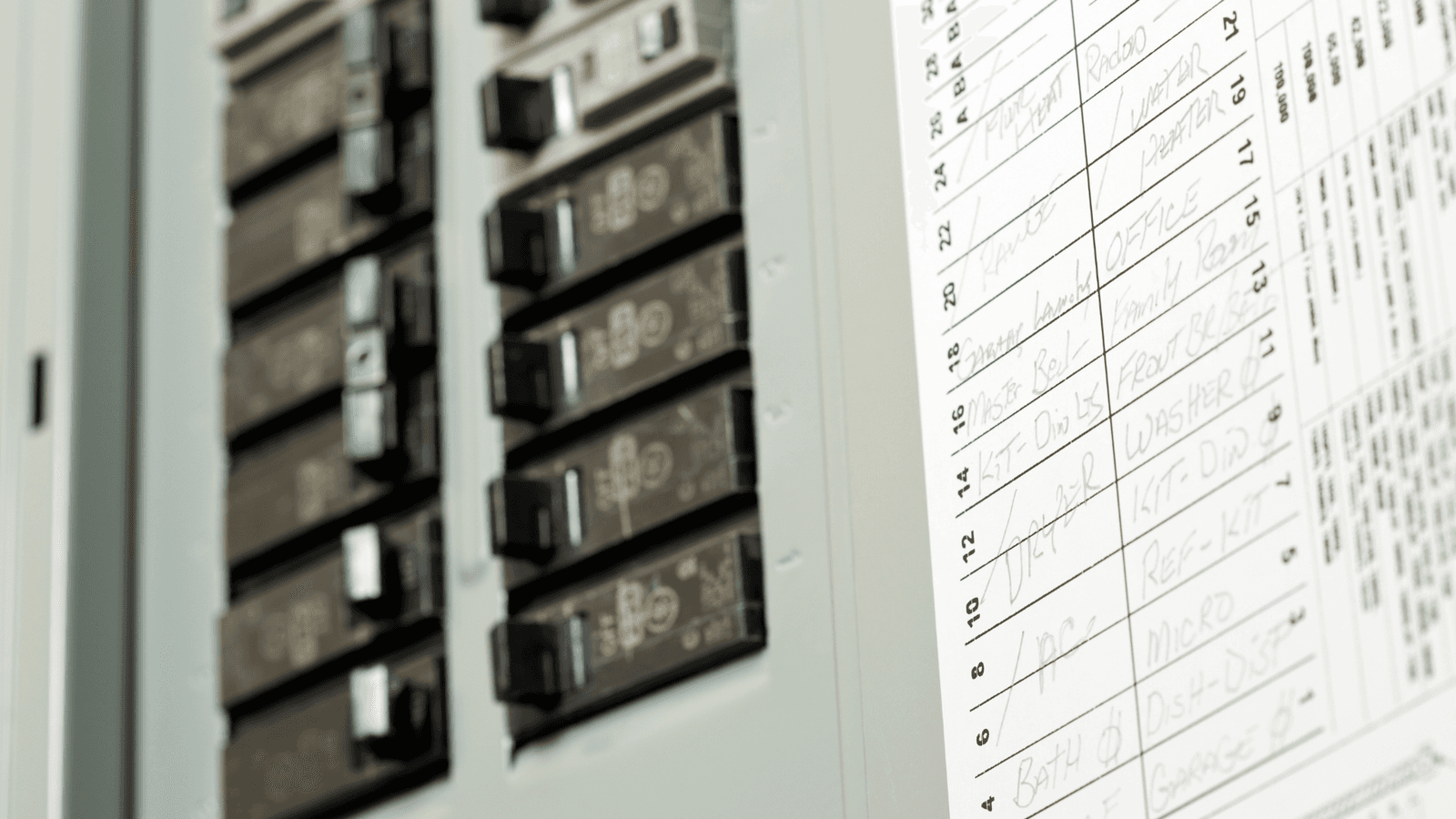Electric car charging stations: maintenance, charging & cost
By Editorial Team
Updated on July 26, 2024

The world continues to change at a rapid pace as we become further technologically advanced. The rise in electric cars over the past few years shouldn’t be surprising as many engineers are looking for ways to create socially conscious and green-friendly technologies. Although these cars work towards saving the environment, what effect do they have on the wallet? Is charging an electric car cheaper than buying gas? What about long-term maintenance?
These are important questions, especially if you’re considering buying an electric car for yourself and your family. There are plenty of misconceptions regarding electric cars, including the details about pricing as well as charging stations. Luckily, we’re here to smooth out the details and clear up these ideas.
Charging your electric car at home

Source: Canva
Before we get into the details of owning and operating an electric car, we should discuss the ability for you to charge at home. Installing an in-home charger is crucial for your ability to use your electric car whenever possible. There are currently 3 different types of electric car chargers and they are Level 1, 2 and 3.
Charging stations Level 1
A level one charger comes with your electric vehicle and does not require any special installation, as this level charger can be plugged into any wall and used. Of course, make sure that your plug is 120 volt. This is appealing to homeowners who don’t want to deal with the complications of installing a charger.
Price : 1000 - 1500$ (installation) and 1 - 2,50$/h.
Charging stations Level 2
nstalling a level 2 electric car charger is a little bit more complicated and may require the help of a professional. The process comes down to running 240 volts from your breaker panel to a dedicated location for charging. When it comes to this type of wiring, you may need to install a new breaker panel all together to support this operation. Alternatively, you might consider installing a double-pole breaker that can exist alongside the panel you have in place.
Once the correct power supply has been added to your home breaker, you can begin installing your Level 2 charger. In most cases, a 4-strand cable will need to be run to your charging station. Make sure that this cable is insulated as to not cause any damage with your electrical panel. Lastly, the charger can be mounted in a comfortable spot where you’ll be charging the car. This charger will act as a safe charging unit and will not allow electricity to flow when your car is not connected.
Price : 500 - 2000$ (installation) and 1 - 3$/h.
Charging stations Level 3
This type of charging station is generally reserved for commercial or industrial settings. Not only are they expensive, but they require special equipment. Therefore, this level charger is not available as an at-home option. These are generally the stations which you’ll find roadside, as they’re powerful enough to charge your vehicle in 30 minutes. Worth mentioning is that these types of chargers are not compatible with all electric vehicles. Before charging your car, be certain that you understand whether your car works with a Level 3.
It’s important to remember that at-home electrical work generally requires a certified electrician or contractor, as electrical work performed by the novice is very dangerous and on top of this, most building and municipal codes will not allow those without permits to complete this type of work.
How does an electric car work?

Source: Canva
There are now a few different types of electric cars on the market, those which are battery electric vehicles, also referred to as BEVs and plug-in hybrid vehicles or PHEVs. BEVs run on a battery and plug into an external electricity source to recharge. PHEVs have an internal combustion engine in case the battery begins to run low and also charge by way of an external source.
HFCVs are another, emerging zero-transmission transportation technology. These derive energy by converting hydrogen’s chemical energy into electrical energy.
From the outside, it`s difficult to catch the differences between an electric car and one powered by gasoline. This is because the majority of electric cars are created by converting one that originally runs on gas. If you pay close attention, you’ll notice that electric cars emit almost zero noise and are thus close to silent. Of course, the inner workings of the motor are different from gas-powered cars. Firstly, gas is replaced by an electric motor and this motor is powered by a controller. The controller that powers the motor is controlled by rechargeable batteries. Sounds simple enough?
In contrast, gas-powered cars have plenty of moving parts including mufflers, fuel lines, exhaust pipes, and coolant hoses. As a result, they are louder and lacking from an environmentally-conscious standpoint, as they create significantly more pollution. This is especially important for keeping greenhouse gases in the modern city under control.
Driving and maintaining an electric car

Source: Canva
Most electric car models run in a similar fashion to a gas-powered vehicle. You enter the car, put the key into the ignition and turn the car “on.” The average electric car has a range of 80-100 km and requires 12-kilowatt-hours of electricity to charge the car after driving this distance. The batteries in the car can last between 3 and 4 years, after which point they’ll need to be replaced.
When compared with the costs of buying gas in North America, the “fuel” for electric cars comes out as much less per kilometre. Another note is that the 80-100 km average distance should not be regarded as a limitation, as the average person rarely drives this distance over the course of a few days.
Of course, one aspect we need to touch on is the cost of battery replacement. Unfortunately, for the average person, the cost of batteries might just be the deciding factor in the purchase of an electric vehicle. Batteries cost roughly $2000 to $10 000 and can last for about 32 000 kilometres. Of course, different car models will require more power than others, as we’re looking at the average. Further, fuel cells are a developing technology that could eliminate the need for a battery although and could be excellent in terms of the costs involved.
If shopping for an electric car, make sure to look for the kilowatt-hours per kilometres. Also, as mentioned do bear in mind that some electric cars are pure while others are hybrid models and thus there will be differences in charging times and how long batteries last when it comes down to vehicle technology, battery size, weight, temperature, and individual driving style.
Refuelling your electric car outside your home

Source: Canva
As you know from our initial paragraph, electric cars are refuelled by charging. Most owners choose to install a home charger but public chargers are becoming widely common in the workplace. These chargers are classified as Level 1 chargers and using this style charger for a car can take between 8-20 hours to be fully charged. Level 2 charging stations will charge a car fully in between 4-6 hours, and finally, Level 3 chargers work the fastest with the ability to charge a car in just 30 minutes. As we mentioned, Levels 1 and 2 are found in the home, whereas Level 3 are generally public chargers. It is recommended that you charge your electric car overnight, as this is cheaper as well as better for the environment since you are using off-peak electricity which is generated by “clean” energy sources including wind, hydro and nuclear.
On average, a typical battery-powered electric car will come in around $300 - $400 per year or roughly $1 per day.
In contrast, a typical plug-in hybrid will cost around $700 per year, and this breaks down to roughly $1.82 per day for fuel.
In Ontario, there are over 6,600 Level 2 and 1,300 Level 3 public charging stations.
In Quebec, there are around 5,500 charging stations and 1000 of those are fast charging stations. Rates for charging at the 240-volt stations come in at $2.50 per charge regardless of time or $1 an hour billed directly to the vehicle. In contrast, a quick charging station is $10 an hour.
Prices across provinces are similar but do bear in mind that some provinces are more environmentally-conscious than others, and thus will be more accessible with electric vehicles. Also, if you plan on installing a home charging station, make sure to apply for the correct permits or work directly with a professional!
Get 3 renovation quotes for your electrical project
RenoQuotes.com will put you in contact with 3 reliable contractors for your home lighting project. Fill in the form on our homepage (it only takes a few minutes), and you will receive quotes from trusted professionals.
Dial 1-844 828-1588 to speak with one of our customer service representatives.
Looking for something else?
Related articles
The latest industry news, interviews, technologies, and resources.

Editorial Team
•06 Dec 2023
Are you looking for a heating system that better suits your household and want to know more about forced-air heating system characteristics?

Editorial Team
•17 Apr 2025
Electricity is a vital component in modern households, powering appliances, lighting up rooms, and facilitating day-to-day living. However, over time, electrical panels, or breaker panels as they’re commonly referred to, are often neglected, becoming near obsolete and presenting potential safety risks and, ultimately, limiting energy efficiency.

Editorial Team
•15 Dec 2023
CLT stands for cross-laminated timber. It’s an engineered wood used in the construction industry to build single-family houses and tall buildings.

Editorial Team
•06 Nov 2025
Obtaining a licence from the Régie du bâtiment du Québec (RBQ) is an essential step for any construction contractor wishing to operate legally in the province. Yet, every year, a large number of applications are refused or delayed due to simple, avoidable mistakes.

Editorial Team
•05 Dec 2023
Storage space for some, unfinished room for others, yet thanks to its size the basement is a part of the house brimming with possibilities. Whether you’re ready to invest or get inventive, there is no limit to your comfort. Make your basement transformation a reality without having to quash your creativity.